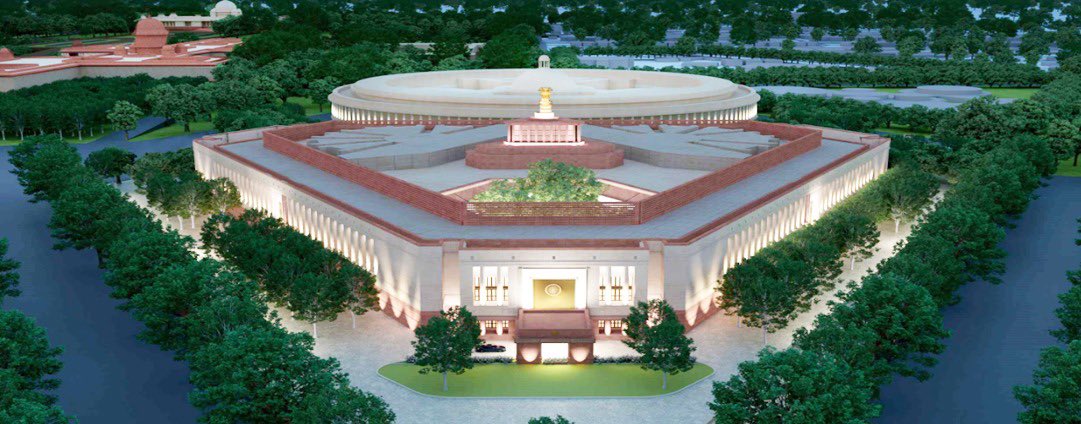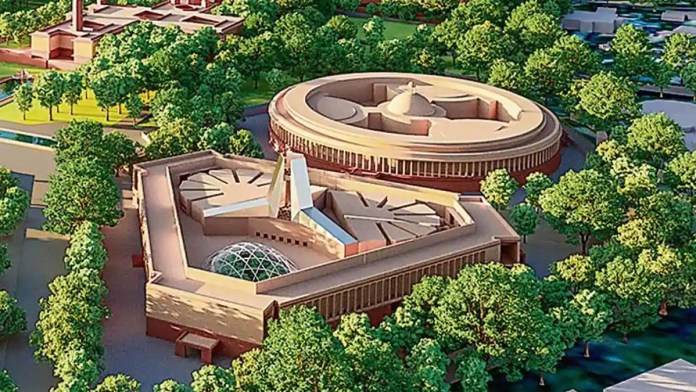
Here's all you need to know about the new Parliament building
For a new Parliament building, Prime Minister Narendra Modi will lay the foundation stone on Thursday (December 10), and the construction is expected to be completed by October 2022 when India celebrates 75 years of independence.

For a new Parliament building, Prime Minister Narendra Modi will lay the foundation stone on Thursday (December 10), and the construction is expected to be completed by October 2022 when India celebrates 75 years of independence.
“The existing temple of democracy is completing 100 years… It is a matter of pride for our countrymen that the new one will be built by our own people as a prime example of Aatmanirbhar Bharat,” Lok Sabha Speaker Om Birla said in Delhi on Saturday while announcing details of the new proposed building.
“The new building will showcase the cultural diversity of the country. Hopefully, in the 75th year of independence (2022), Parliament session will be held in the new building,” he added.
Here is all you need to know about the new Parliament building.
The new building will have an area of 64,500 square metres and is being built at an estimated cost of ₹ 971 crore.
In September this year, Tata Projects Limited won the bid to construct the new parliament building at a cost of ₹ 861.90 crore. The new building will be constructed close to the existing one under the Central Vista redevelopment project.
Related News: Ground-level changes for Central Vista project will be at officials’ risk, says SC
The new building will be earthquake resistant and 2,000 people will be directly involved in the construction of the new building and 9,000 indirectly.
As many as 1,224 MPs can sit together in the building, while a new office complex for all MPs of both the houses would be built at the site of the existing Shram Shakti Bhawan.
The existing Parliament building will be conserved as it is an archaeological asset of the country.
The existing building is a British era building, designed by Edwin Lutyens and Herbert Baker who were responsible for planning and construction of New Delhi.
The foundation stone of the existing Parliament House was laid on February 12, 1921 and the construction took six years and cost ₹ 83 lakh at that time. The opening ceremony was performed on January 18, 1927 by the then Governor-General of India, Lord Irwin.
Birla said the outlook of the new building will be similar to the existing one. “There will be a basement, ground, first and second floors in the new building and its height will be same as the old building so that both should are in symmetry.”
The Lok Sabha Speaker said the invitation will be extended to all political parties. While some would attend physically and others would attend virtually, Birla said, while adding that the ground laying ceremony at 1 pm on December 10 would follow all Covid-related guidelines.

As per rules, the speaker of the lower house of parliament is also the custodian of the parliament building.
Sufficient steps have been taken to control air and noise pollution during the construction work for the new parliament building, which will have separate offices for all MPs and those will be equipped with the latest digital interfaces as a step towards creating “paperless offices”.
The new building will also have a grand Constitution Hall to showcase India’s democratic heritage, a lounge for members of Parliament, a library, multiple committee rooms, dining areas and ample parking space.
In the new building, the Lok Sabha chamber will have a seating capacity for 888 members, while Rajya Sabha will have 384 seats for the upper house members.
This has been done keeping in mind the future increase in the number of members for the two houses.
The existing Parliament House building will be suitably retro-fitted to provide more functional spaces for parliamentary events, to ensure its usage along with the new building.
The existing building is a massive circular edifice of 560 feet in diameter. The Parliament House Estate is enclosed by an ornamental red sandstone wall or iron grills with iron gates that can be closed when occasions demand. The building has 12 gates.
(With inputs from PTI)

